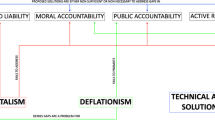Abstract
The fundamental assumptions in Dijkstra's influential article on computing science teaching are challenged. Dijkstra's paper presents the radical novelties of computing, and the consequent problems that we must tackle through a formal, logic-based approach to program derivation. Dijkstra's main premise is that the algorithmic programming paradigm is the only one, in fact, the only possible one. It is argued that there is at least one other, the network-programming paradigm, which itself is a radical novelty with respect to the implementation of problems on computers. And, as one might expect of a radical alternative, it shows much of the conventional wisdom concerning computing science, which Dijkstra variously attacks and dispenses, to be special pleading; not universals of computing at all. Finally, we explore what is known of this new paradigm in order to see what light it sheds on the fundamental problems that computing really does present to us. Not surprisingly, some become less problematic, some disappear altogether and others take their place, but, in general, it must be of benefit to modern computer technology to gain a wider perspective on the possibilities instead of seeing everything through the traditional tunnel of programming as formula derivation, and computers as the requisite, special type of symbol manipulation device.
Similar content being viewed by others
References
Aleksander, I., Thomas, V. W., and Bowden, P. A. (1984), ‘WISARD — A Radical Step Forward in Image Recognition’,Sensor Review, pp. 120–124.
Dijkstra, E. W. (1989), ‘On the Cruelty of Really Teaching Computing Science’,Communications of ACM 32(12), pp. 1398–1404 and 1414.
Fodor, J. A. and Pylyshyn, Z. W. (1988), ‘Connectionism and Cognitive Architecture: A Critical Analysis’,Cognition 28, pp. 3–71.
van Gelder, T. (1990), ‘Compositionality: A Connectionist Variation on a Classical Theme’,Cognitive Science 14, pp. 355–384.
Partridge, D. and Griffith, N. (1995), ‘Strategies for Improving Neural Net Generalisation’,Neural Computing & Applications 3, pp. 27–37.
Partridge, D. and Klyne, S. (1995), ‘Voting or Averaging as Collective Decisions’,Research Report No.313, Department of Computer Science, University of Exeter, Exeter EX4 4PT, UK.
Partridge, D. and Yates, W. B. (1995), ‘Engineering Multiversion Neural-Net Systems’,Research Report no.320, Department of Computer Science, University of Exeter, Exeter EX4 4PT, UK.
Schwarz, G. (1992), ‘Connectionism, Processing, Memory’,Connection Science 4(4), pp. 207–226.
Widrow, B., Rumelhart, D. E., and Lehr, M. A. (1994), ‘Neural Networks: Applications in Industry, Business and Science’,Communications of ACM 37(3), pp. 93–105.
Author information
Authors and Affiliations
Additional information
By means of metaphors and analogies, we try to link the new to the old, the novel to the familiar ... in the case of a sharp discontinuity, however, the method breaks down ... our past experience is no longer relevant; the analogies become to shallow; and, the metaphors become more misleading than illuminating. This is the situation that is characteristic of the ‘radical’ novelty. (Dijkstra, 1989, p. 1398).
Rights and permissions
About this article
Cite this article
Partridge, D. On the difficulty of really considering a radical novelty. Mind Mach 5, 391–410 (1995). https://doi.org/10.1007/BF00974752
Issue Date:
DOI: https://doi.org/10.1007/BF00974752



